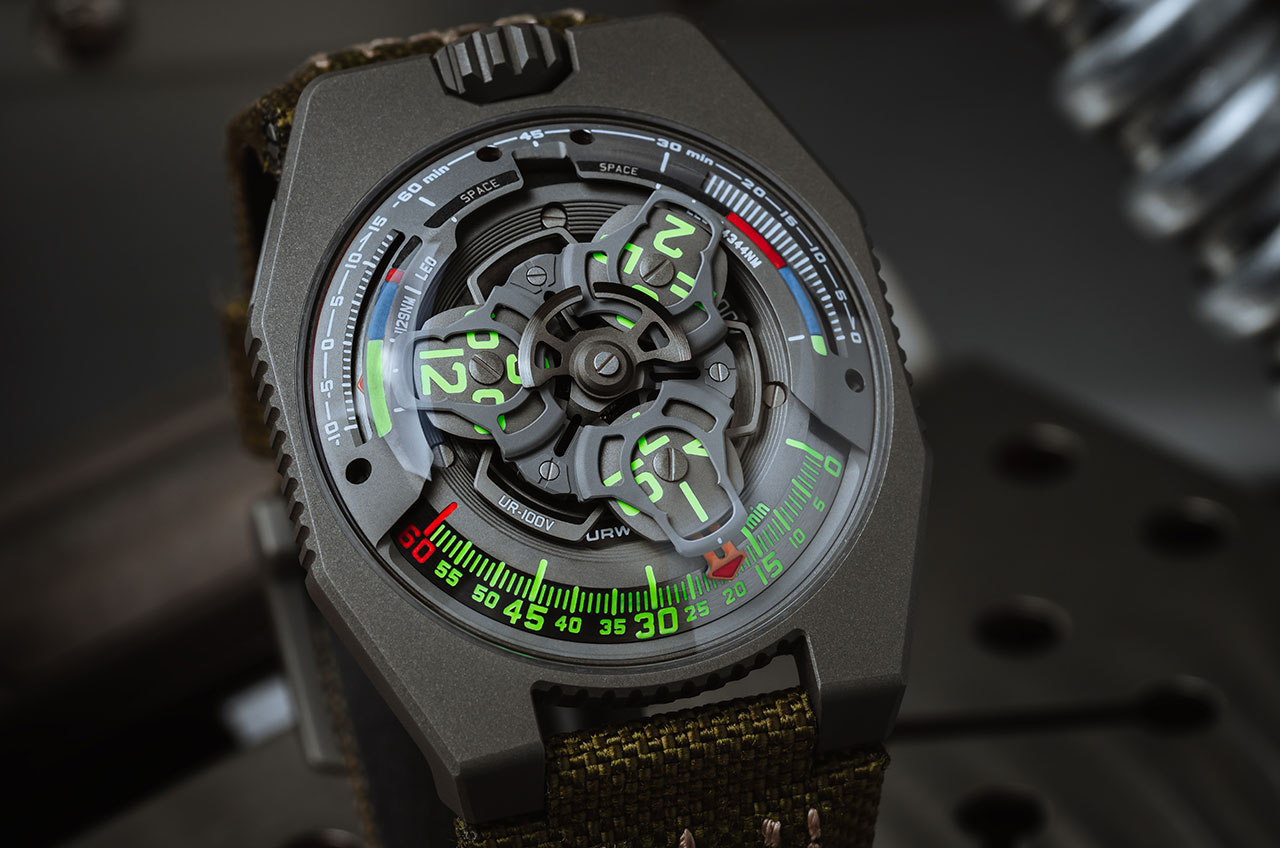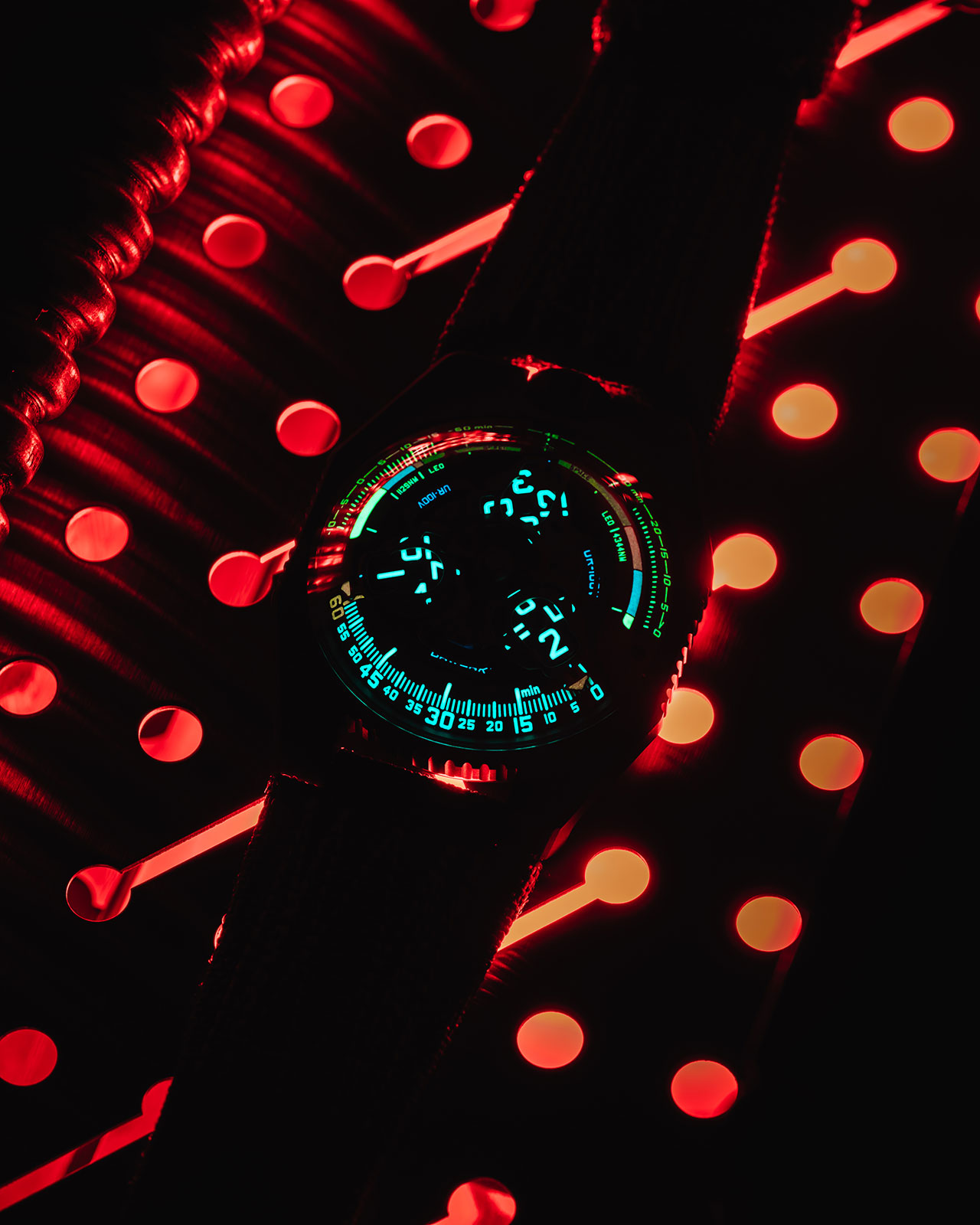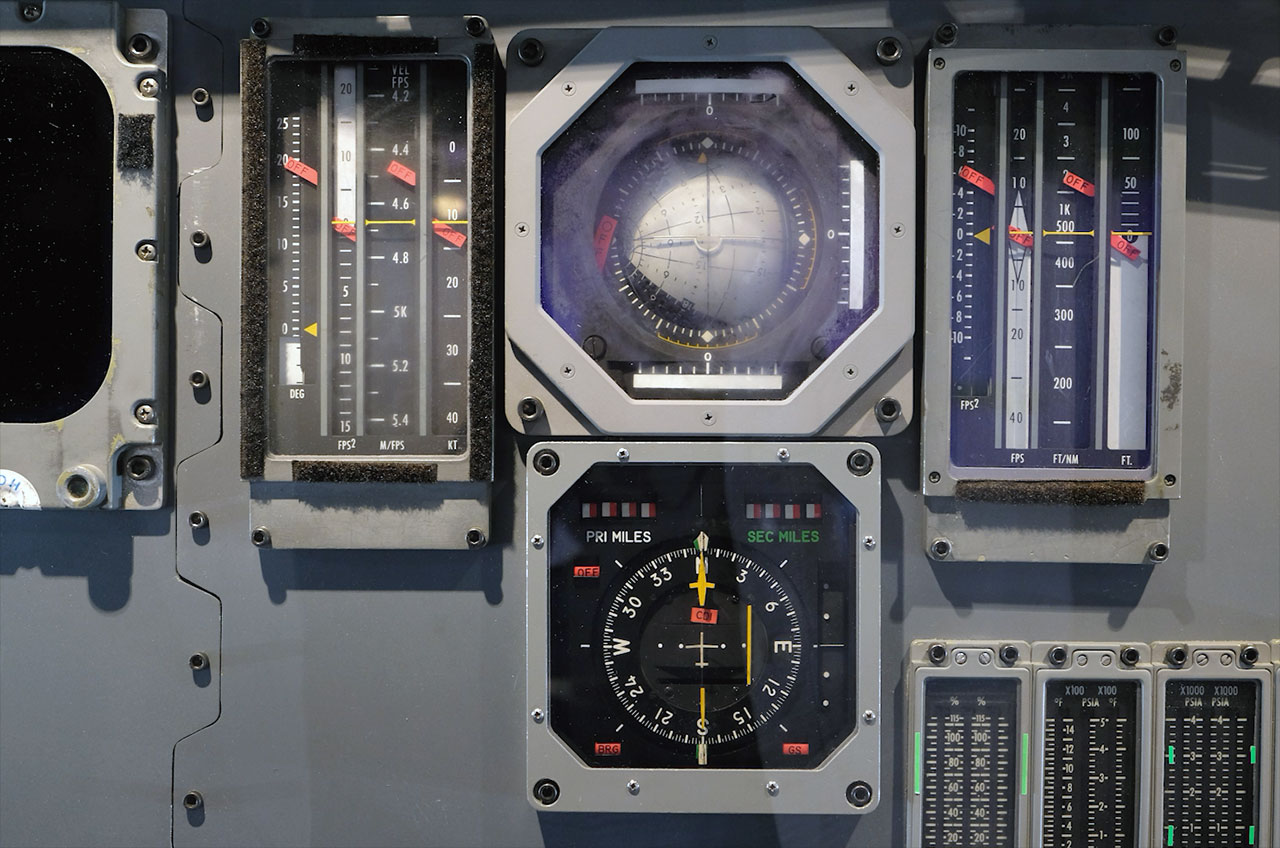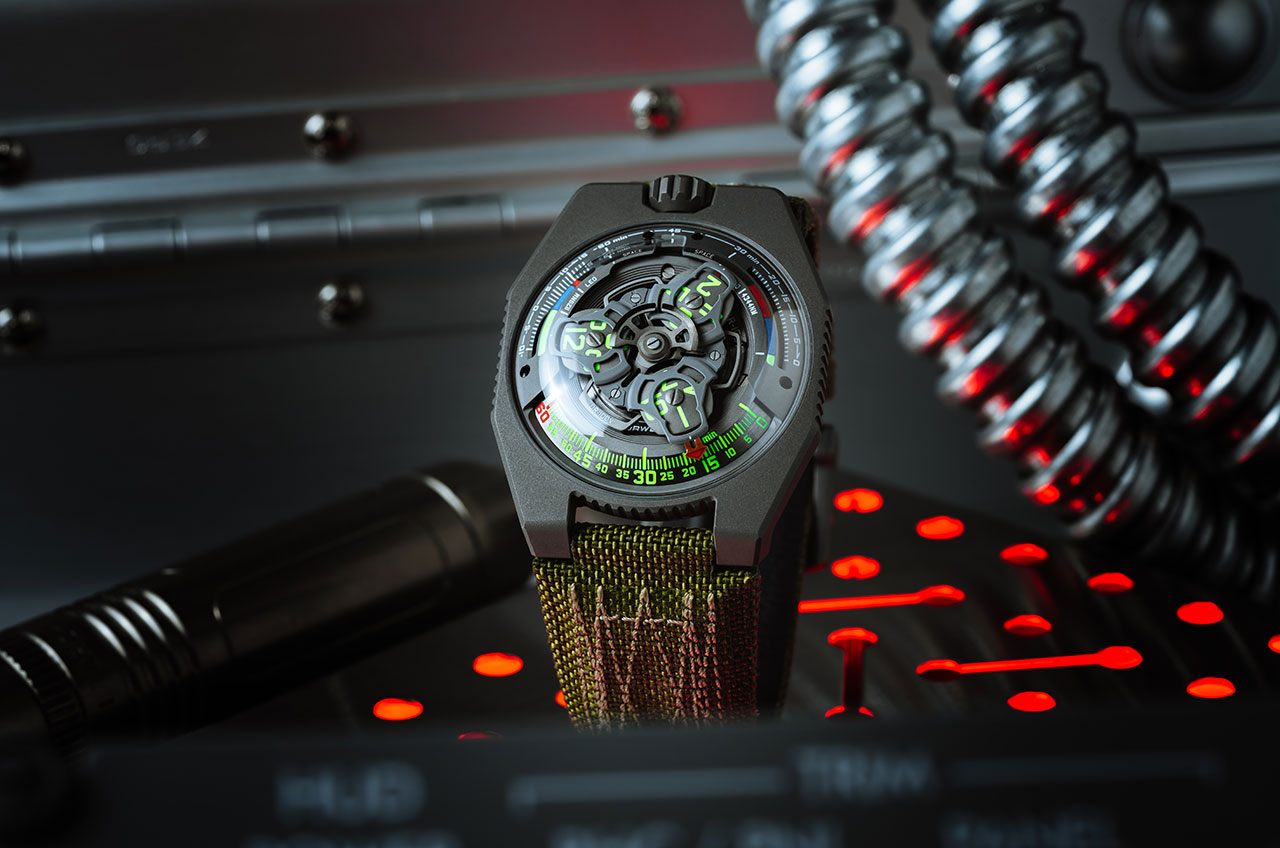New Urwerk wristwatch inspired by NASA space shuttle Enterprise controls

The analog dials and displays used to fly a 40-year-old NASA space shuttle have inspired the look of a new, avant-garde timepiece.
The UR-100V P.02 wristwatch, which was unveiled on Tuesday (July 20), merges luxury Swiss watchmaker Urwerk's unique approach to displaying the time with the flight deck aesthetics of the space shuttle Enterprise. The watch is the result of a partnership between Urwerk and Collective Horology, a Silicon Valley-based watch enthusiast club, together with the Intrepid Sea, Air & Space Museum in New York, which displays the retired Enterprise.
"I knew they he want to do the classic space shuttle shape in black and white and things like that," Eric Boehm, aviation curator at the Intrepid, said about Urwerk's co-founder and chief designer Martin Frei. "I can see, looking at the [Enterprise's] instrumentation, exactly where Martin's inspiration came from."
"I am a big fan of cockpits and the instruments that come with it," said Frei. "I can look at as an aesthetical language, which is not just in the service of the pilots. It is, for me, really a style."
Related: How Nerds Named NASA's Space Shuttle Enterprise




Unless you are already familiar with Frei's work, the appearance of the UR-100V P.02 may be at first confusing, unlike any other wristwatch you have seen before. Instead of traditional hands pointing to a single set of number markers positioned around a dial, Urwerk's timepieces use orbiting satellites to display the hour, with hands indicating the minutes and other data.
"The one thing I want people to feel when they look at it is exploration and all it is daring," Frei said. "When you have an object from everyday life and you make it look differently — the indication of time works differently — that somehow shows you that things can be different. It can look different, but it can also work different and it can transport you and make you travel to space."
Get the Space.com Newsletter
Breaking space news, the latest updates on rocket launches, skywatching events and more!
Earlier models of the UR-100 used the watch's mechanism to indicate Earth's position within the solar system. For the UR-100V P.02, the wearer can get a sense of what it was like to ride the space shuttle into orbit and return to a runway for a landing.
"You have these two extra, lateral indications on the sides we use to indicate a trip up to space on one side and the other side, the trip back to Earth," said Frei.
In addition to providing a minute-by-minute guide, these apertures display the approximate location of the space shuttle at each phase of a launch and landing (exact timing varied from mission to mission). The minutes marked in green represents the spacecraft while still on Earth. Blue indicates the shuttle traveling through Earth's sky or lower atmosphere. Red symbolizes the upper atmosphere and black designates time in space in low Earth orbit.
"When you get your hands on the P.02," said Boehm, "your impulse is immediately to watch the wandering hour complication play out. As you watch the hand wander through the space shuttle's typical launch sequence you really can think about what seven minutes sitting at the top of a rocket must be like."
The manual that accompanies the UR-100V P.02 not only explains how to read and use the watch, but also delves into some of the details of a shuttle mission.
"What we like and think is exciting is that a watch is a creative canvas upon which stories can be told. We don't fancy ourselves watch designers but, because of our marketing background, we do see ourselves as storytellers," said Asher Rapkin, who with Gabe Reilly, founded Collective Horology.
The UR-100V P.02 pays tribute to the 40th anniversary of NASA's space shuttle program, which first reached space in 1981. The last and 135th mission returned from space 10 years ago Wednesday (July 21).
Available exclusively for sale to Collective Horology members and limited to only 20 pieces at $62,500 each, the sale of the UR-100V P.02 will also help ensure that the space shuttle Enterprise can be cared for by the Intrepid for years to come.
"We and Goldsmith & Complications, the official authorized dealer, are going to donate a total of U.S. $50,000 dollars from the proceeds of this project to the Intrepid Museum to help ensure that Enterprise's stories of bravery and innovation will be told for generations to come," said Rapkin.
"I was thrilled to assist in bringing the P.02 to life," said Boehm, "taking design inspiration from Enterprise's cockpit instruments to help tell the story of some of the shuttle program's most dramatic moments."
Follow collectSPACE.com on Facebook and on Twitter at @collectSPACE. Copyright 2021 collectSPACE.com. All rights reserved.
Join our Space Forums to keep talking space on the latest missions, night sky and more! And if you have a news tip, correction or comment, let us know at: community@space.com.

Robert Pearlman is a space historian, journalist and the founder and editor of collectSPACE.com, a daily news publication and community devoted to space history with a particular focus on how and where space exploration intersects with pop culture. Pearlman is also a contributing writer for Space.com and co-author of "Space Stations: The Art, Science, and Reality of Working in Space” published by Smithsonian Books in 2018.In 2009, he was inducted into the U.S. Space Camp Hall of Fame in Huntsville, Alabama. In 2021, he was honored by the American Astronautical Society with the Ordway Award for Sustained Excellence in Spaceflight History. In 2023, the National Space Club Florida Committee recognized Pearlman with the Kolcum News and Communications Award for excellence in telling the space story along the Space Coast and throughout the world.










